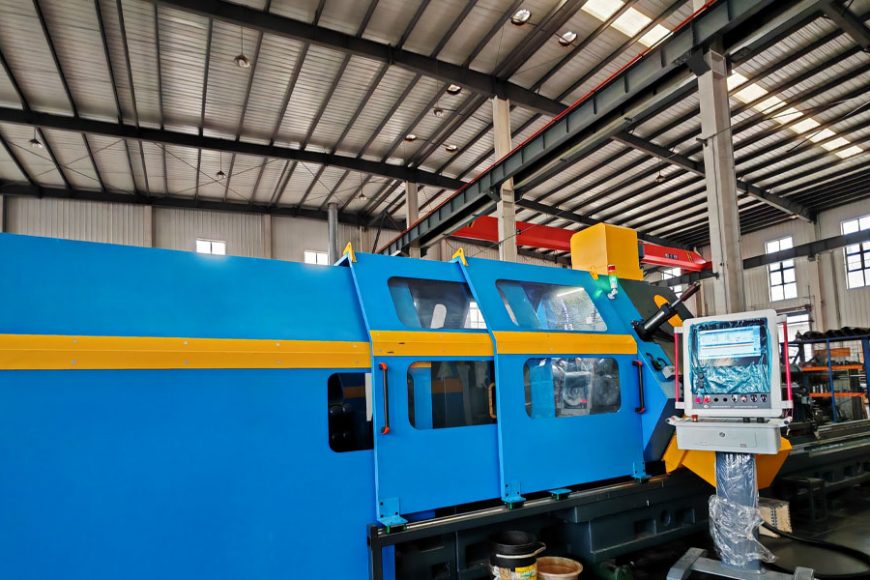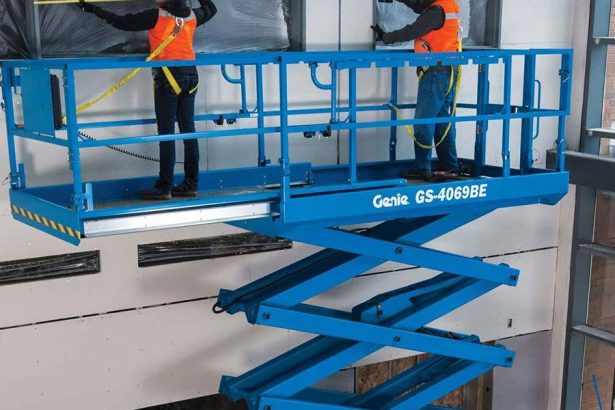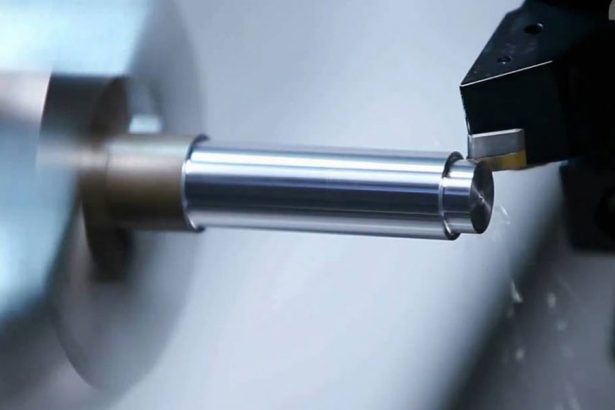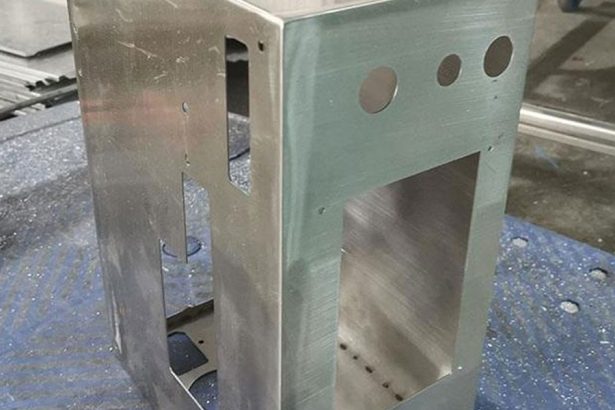Sheet metal spinning, also known as spin forming or metal spinning, is a metalworking process used to form axially symmetric parts by rotating a metal blank at high speed and applying localized pressure with a forming tool, typically a roller, to shape the material over a mandrel. This process is widely utilized in industries such as aerospace, automotive, and lighting for producing components like cones, cylinders, hemispheres, and other rotationally symmetric shapes. The mechanics of sheet metal spinning involve complex interactions of material properties, process parameters, and tool dynamics, necessitating precise calculations of forces, stresses, and deformations to optimize the process and ensure part quality.
This article provides a comprehensive exploration of the formulas and force calculations involved in sheet metal spinning, grounded in theoretical models, empirical data, and finite element analyses. It includes detailed explanations of the underlying mechanics, mathematical derivations, and practical applications, supplemented by comparative tables to elucidate key concepts. The discussion is structured to cover the fundamental principles, process parameters, force components, failure modes, and advanced computational methods, offering a thorough resource for researchers, engineers, and practitioners.
1. Introduction to Sheet Metal Spinning
Sheet metal spinning is a cold-forming process that transforms a flat circular blank or preformed sheet into a hollow, axially symmetric component. The blank is clamped against a rotating mandrel, and a roller applies localized pressure to deform the material incrementally. The process is distinguished by its flexibility, low tooling costs, and ability to produce high-quality parts with minimal material waste compared to alternative methods like deep drawing or press forming. Spinning is typically performed on a lathe or a dedicated CNC spinning machine, with the roller following a predefined toolpath to achieve the desired geometry.
The mechanics of spinning involve a combination of bending, stretching, and compressive deformation, influenced by factors such as material properties, blank thickness, mandrel speed, roller feed rate, and tool geometry. Accurate force calculations are critical to predict material behavior, prevent defects like wrinkling or tearing, and optimize process parameters. The following sections delve into the theoretical framework, mathematical models, and empirical approaches used to quantify forces and stresses in sheet metal spinning.
2. Fundamentals of Sheet Metal Spinning Mechanics
2.1. Process Overview
In conventional sheet metal spinning, a circular blank is mounted on a rotating mandrel, which defines the internal geometry of the final part. The roller, positioned on a toolpost, moves along a controlled path, applying radial and axial forces to shape the blank. The process can be categorized into three main types:
- Conventional Spinning: The blank is progressively formed into the mandrel shape without significant thickness reduction, relying on bending and stretching.
- Shear Spinning: The material is intentionally thinned by applying shear forces, following the sine law to maintain a constant thickness proportional to the mandrel angle.
- Tube Spinning: A preformed tube is spun to reduce its wall thickness or modify its shape, often used for seamless pipes or cylindrical components.
Each type involves distinct force interactions, necessitating specific calculations to model the deformation process accurately.
2.2. Key Variables in Spinning
The spinning process is governed by several variables that influence force calculations and part quality:
- Material Properties: Yield strength, ultimate tensile strength, elongation, and strain hardening exponent of the blank material (e.g., aluminum, steel, titanium).
- Blank Geometry: Diameter, thickness, and initial shape (flat or preformed).
- Mandrel Parameters: Diameter, shape, rotational speed (typically 100–1000 rpm), and surface finish.
- Roller Parameters: Diameter, nose radius, feed rate (mm/rev), and angle of attack (relative to the blank).
- Process Conditions: Lubrication, temperature (cold or hot spinning), and number of passes (single or multi-pass).
These variables interact dynamically, affecting the forces, stresses, and strains during spinning. Mathematical models and empirical formulas are used to quantify these interactions and predict process outcomes.
3. Theoretical Framework for Force Calculations
3.1. Force Components in Spinning
The forces in sheet metal spinning are typically resolved into three primary components, corresponding to the cylindrical coordinate system of the rotating blank:
- Radial Force (Fr): Acts perpendicular to the mandrel axis, compressing the blank against the mandrel and driving radial deformation.
- Axial Force (Fa): Acts parallel to the mandrel axis, contributing to the axial flow of material and stretching.
- Tangential Force (Ft): Acts in the direction of rotation, influenced by friction between the roller and blank, affecting torque and power requirements.
These forces are illustrated in Figure 1 (hypothetical diagram), where the roller contacts the blank at an angle, generating a resultant force vector that can be decomposed into Fr, Fa, and Ft.
3.2. Basic Force Equilibrium
The forces acting on the blank are governed by equilibrium conditions, considering the roller’s contact mechanics and the material’s resistance to deformation. The resultant force (F) at the roller-blank interface can be expressed as:
[ F = \sqrt{F_r^2 + F_a^2 + F_t^2} ]
Where:
- ( F_r ): Radial force component (N)
- ( F_a ): Axial force component (N)
- ( F_t ): Tangential force component (N)
The direction and magnitude of these forces depend on the roller’s angle of attack ((\alpha)), the friction coefficient ((\mu)), and the material’s flow stress ((\sigma_f)).
3.3. Material Flow Stress
The flow stress of the material, which dictates its resistance to plastic deformation, is modeled using the Hollomon power-law relationship:
[ \sigma_f = K \epsilon^n ]
Where:
- ( \sigma_f ): Flow stress (MPa)
- ( K ): Strength coefficient (MPa)
- ( \epsilon ): True strain
- ( n ): Strain hardening exponent
For example, for 3103 aluminum alloy, typical values are ( K = 180 , \text{MPa} ) and ( n = 0.2 ). The flow stress increases with strain, affecting the forces required as deformation progresses.
4. Mathematical Models for Force Prediction
4.1. Simplified Analytical Models
Early models for spinning forces relied on simplified assumptions, treating the process as a static bending operation. One such model approximates the radial force based on the material’s yield strength and contact area:
[ F_r = \sigma_y \cdot t \cdot w ]
Where:
- ( \sigma_y ): Yield strength (MPa)
- ( t ): Blank thickness (mm)
- ( w ): Contact width between roller and blank (mm)
However, this model neglects dynamic effects, friction, and strain hardening, limiting its accuracy for complex geometries.
4.2. Empirical Force Formulas
Empirical formulas, derived from experimental data, provide practical estimates of spinning forces. For instance, Russo et al. (2020) proposed a regression-based model for radial force in multi-pass spinning:
[ F_r = C_1 \cdot t^{C_2} \cdot f^{C_3} \cdot R_r^{C_4} ]
Where:
- ( C_1, C_2, C_3, C_4 ): Empirical constants (determined experimentally)
- ( t ): Blank thickness (mm)
- ( f ): Feed rate (mm/rev)
- ( R_r ): Roller nose radius (mm)
Typical values for 3103 aluminum alloy are ( C_1 = 500, C_2 = 1.2, C_3 = 0.8, C_4 = -0.5 ), yielding forces in the range of 1–10 kN for standard conditions.
4.3. Advanced Analytical Models
More sophisticated models incorporate incremental deformation and toolpath dynamics. For shear spinning, the axial force can be derived from the sine law, which relates the final thickness to the mandrel angle:
[ t_f = t_0 \cdot \sin(\theta) ]
Where:
- ( t_f ): Final thickness (mm)
- ( t_0 ): Initial thickness (mm)
- ( \theta ): Mandrel wall angle (degrees)
The axial force is then estimated as:
[ F_a = \sigma_f \cdot t_0 \cdot A_c \cdot \sin(\theta) ]
Where ( A_c ) is the contact area (mm²). This model accounts for thickness reduction but assumes uniform deformation, which may not hold for multi-pass processes.
5. Finite Element Analysis (FEA) in Spinning
5.1. Role of FEA
Finite element analysis (FEA) has become a cornerstone for modeling sheet metal spinning, offering detailed insights into stress distributions, strain fields, and force variations. FEA simulates the incremental deformation process, accounting for material nonlinearity, contact mechanics, and dynamic effects. Software like MSC Simufact.Forming and Abaqus are commonly used for spinning simulations.
5.2. FEA Model Setup
A typical FEA model for spinning includes:
- Geometry: Blank (shell or solid elements), mandrel (rigid body), and roller (rigid or deformable).
- Material Model: Elasto-plastic behavior with isotropic or anisotropic yield criteria (e.g., von Mises or Hill’s 1948 model).
- Boundary Conditions: Mandrel rotation (constant speed), roller toolpath (linear or curved), and frictional contact (Coulomb model, (\mu = 0.1–0.3)).
- Mesh: Hexahedral or tetrahedral elements for the blank, with finer mesh near the contact zone to capture localized deformation.
For example, a model for a 500 mm diameter, 2 mm thick 3103 aluminum blank might use 18,927 hexahedral elements with three elements through the thickness to balance accuracy and computational cost.
5.3. Force Predictions via FEA
FEA provides time-dependent force profiles, revealing peaks during initial contact and variations across passes. For a ten-pass spinning process, radial forces typically range from 2–8 kN, axial forces from 1–5 kN, and tangential forces from 0.5–2 kN, depending on process parameters (e.g., 500 rpm mandrel speed, 1 mm/rev feed rate, 6 mm roller radius).
5.4. Validation with Experiments
FEA results are validated against experimental data, such as force measurements from load cells or wall thickness distributions. For instance, a study by MDPI (2023) reported an average wall thickness deviation of 0.5 mm between FEA and experimental results for a deep cylinder, confirming the reliability of simulation-based force predictions.
6. Process Parameters and Their Impact on Forces
6.1. Mandrel Speed
Mandrel speed (rpm) affects frictional heating and material flow. Higher speeds (e.g., 1000 rpm) reduce tangential forces by minimizing sticking friction but may increase radial forces due to centrifugal effects. Optimal speeds balance force reduction and process stability, typically 300–600 rpm for aluminum.
6.2. Feed Rate
The roller feed rate (mm/rev) governs the rate of deformation. Higher feed rates (e.g., 2 mm/rev) increase radial and axial forces due to greater material resistance, potentially causing wrinkling. Lower feed rates (e.g., 0.5 mm/rev) reduce forces but extend cycle time. Empirical data suggest an optimal feed rate of 1 mm/rev for most materials.
6.3. Roller Geometry
The roller’s nose radius and angle of attack significantly influence force distribution. Smaller nose radii (e.g., 4 mm) concentrate forces, increasing localized stresses and the risk of tearing. Larger radii (e.g., 8 mm) distribute forces more evenly, reducing peak loads. The angle of attack (typically 30–45°) affects the balance between radial and axial components, with steeper angles increasing axial forces.
6.4. Blank Thickness
Thicker blanks (e.g., 5 mm) require higher forces due to increased material volume and resistance. The force-thickness relationship is nonlinear, approximated as:
[ F \propto t^2 ]
This quadratic dependence reflects the increased bending moment and plastic work in thicker materials.
7. Failure Modes and Force-Related Defects
7.1. Wrinkling
Wrinkling occurs when compressive stresses in the flange exceed the material’s buckling resistance, often due to excessive radial forces or improper toolpaths. The critical buckling stress is given by:
[ \sigma_{cr} = \frac{E \cdot t^2}{12 \cdot (1 – \nu^2) \cdot R} ]
Where:
- ( E ): Young’s modulus (MPa)
- ( \nu ): Poisson’s ratio
- ( R ): Flange radius (mm)
Force calculations help predict wrinkling by monitoring radial force peaks and adjusting feed rates or roller paths.
7.2. Tearing
Tearing results from excessive tensile stresses, typically at the wall-mandrel interface, when axial forces exceed the material’s ultimate strength. The maximum tensile stress can be estimated as:
[ \sigma_{max} = \frac{F_a}{t \cdot w} ]
Preventing tearing requires optimizing axial force through smaller feed rates or multi-pass strategies.
7.3. Springback
Springback, the elastic recovery of the material after deformation, affects dimensional accuracy. It is more pronounced with smaller roller radii and higher feed rates, as these increase residual stresses. The springback angle ((\Delta\theta)) is approximated as:
[ \Delta\theta = \frac{\sigma_y \cdot t}{E \cdot R_m} ]
Where ( R_m ) is the mandrel radius. Force calculations inform springback compensation by adjusting roller pressure.
8. Comparative Analysis of Force Models
To facilitate comparison, Table 1 summarizes key force models for sheet metal spinning, highlighting their assumptions, applications, and limitations.
Table 1: Comparison of Force Models in Sheet Metal Spinning
| Model Type | Formula/Approach | Assumptions | Applications | Limitations |
|---|---|---|---|---|
| Simplified Analytical | ( F_r = \sigma_y \cdot t \cdot w ) | Static bending, uniform contact, no friction | Quick estimates for simple geometries | Ignores dynamic effects, strain hardening, and toolpath variations |
| Empirical | ( F_r = C_1 \cdot t^{C_2} \cdot f^{C_3} \cdot R_r^{C_4} ) | Regression-based, material-specific constants | Multi-pass spinning, process optimization | Requires experimental calibration, limited generalizability |
| Advanced Analytical | ( F_a = \sigma_f \cdot t_0 \cdot A_c \cdot \sin(\theta) ) | Sine law, uniform shear deformation | Shear spinning, thickness prediction | Assumes constant thickness reduction, neglects multi-pass complexities |
| Finite Element Analysis | Numerical simulation with elasto-plastic material models and contact mechanics | Nonlinear material behavior, dynamic toolpath | Complex geometries, stress/strain analysis | Computationally intensive, requires accurate material and boundary conditions |
This table underscores the trade-offs between simplicity and accuracy, with FEA offering the most comprehensive insights at the cost of computational complexity.
9. Experimental Validation and Case Studies
9.1. Case Study: Deep Cylinder Spinning
A study by MDPI (2023) investigated the spinning of a deep cylinder (500 mm diameter, 2 mm thick, 700 mm deep) using 3103 aluminum alloy. The process involved ten passes with the following parameters:
- Mandrel speed: 500 rpm
- Feed rate: 1 mm/rev
- Roller nose radius: 6 mm
- Angle of attack: 35°
Force measurements showed radial forces peaking at 6.5 kN in the first pass, decreasing to 3 kN in later passes due to material thinning. FEA predicted forces within 10% of experimental values, validating the model’s accuracy.
9.2. Case Study: Non-Circular Blank Spinning
An experimental study on spinning an octagonal AL-1050 blank revealed unique force patterns due to anisotropic deformation. Numerical simulations indicated that uneven compressive strains at the edges increased radial forces by 15% compared to circular blanks, highlighting the need for tailored force models for non-standard geometries.
10. Advanced Topics in Spinning Force Calculations
10.1. Haptic Spinning Systems
Haptic devices, which provide force feedback to operators, enable real-time force monitoring and toolpath adjustment. Russo et al. (2020) demonstrated that haptic systems reduce radial forces by 20% by allowing artisans to optimize toolpaths intuitively, bridging manual and automated spinning.
10.2. Hot Spinning
Hot spinning, used for difficult-to-form materials like titanium, reduces forces by lowering flow stress at elevated temperatures (e.g., 600°C). The force reduction is modeled as:
[ F_{\text{hot}} = F_{\text{cold}} \cdot \frac{\sigma_f(T)}{\sigma_f(T_0)} ]
Where ( \sigma_f(T) ) is the temperature-dependent flow stress. This approach extends formability but complicates force predictions due to thermal gradients.
10.3. Asymmetric Spinning
Spinning non-axisymmetric parts, such as rectangular boxes, introduces variable force distributions. Synchronous multipass spinning, as developed by Sugita and Arai (2015), uses hybrid force/position control to maintain consistent forces, with radial forces ranging from 3–7 kN depending on the mandrel offset.
11. Practical Applications and Industry Insights
Sheet metal spinning is integral to producing components like aircraft nose cones, automotive wheels, and kitchenware. Force calculations inform process design by:
- Optimizing toolpaths to minimize defects.
- Selecting appropriate machine capacities (e.g., 10–50 kN for industrial spinning lathes).
- Reducing cycle times through multi-pass strategies.
Industry trends emphasize automation and CNC integration, with force feedback systems enhancing precision and repeatability.
12. Future Directions in Spinning Research
Ongoing research aims to:
- Develop real-time force prediction algorithms using machine learning.
- Enhance FEA models with adaptive meshing for complex geometries.
- Explore hybrid processes combining spinning with additive manufacturing.
These advancements promise to reduce trial-and-error in process planning and expand spinning’s applicability to lightweight alloys and composites.
13. Conclusion
Sheet metal spinning is a versatile and efficient process for producing axially symmetric parts, underpinned by a rich framework of force calculations and mathematical models. From simplified analytical formulas to sophisticated FEA simulations, these tools enable engineers to predict and optimize forces, ensuring high-quality outcomes. Comparative analyses, as presented in Table 1, highlight the strengths and limitations of various approaches, guiding practitioners in selecting appropriate methods. As the field evolves, integrating advanced computational techniques and real-time monitoring will further enhance the precision and scope of sheet metal spinning, cementing its role in modern manufacturing.




